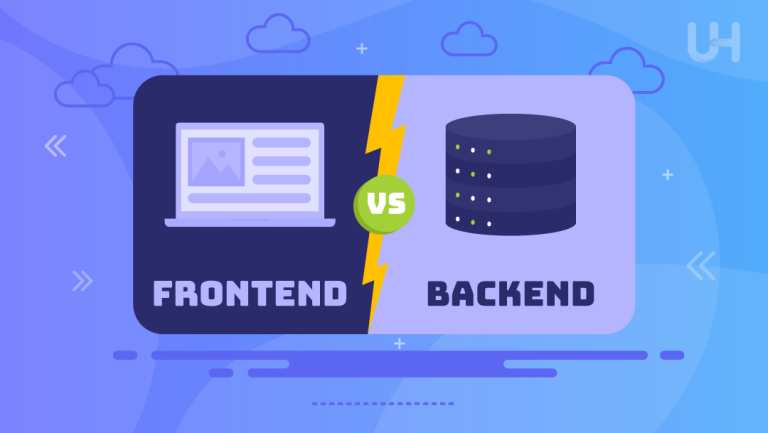Since web development is changing quickly, a proper selection of programming languages is needed to suit successful projects. Among the most prevalent languages that often create debates are PHP vs JavaScript. While both languages are for different purposes, differences in their features, advantages, and disadvantages make them suitable for different kinds of projects. Understanding their strengths and weaknesses will help them gather proper knowledge and make an effective decision.
In this article, we will dive into PHP vs JavaScript for better clarity over how the languages work, at what they are strong, and where exactly either becomes the best fit for the requirements of your project. With deeper insight into their relative advantages, disadvantages, use cases, and types of applications benefiting most from each, you can choose if PHP or JavaScript is the right choice for your new project.
What is PHP?
PHP (Hypertext Preprocessor) is a server-side scripting, open-source language for developing dynamic web pages. It plays an important role in dynamic and interactive web pages, hence its great demand among backend developers. PHP is meant for managing servers’ work, which includes handling requests, data processing, and communication with the database. It also supports various MySQL databases, making PHP versatile for web developers.
PHP syntax is simple and relatively easy for a developer with experience with C-style languages. Due to its high popularity, many web hosting services provide PHP support out-of-the-box, making it one of the most accessible languages for developers. PHP runs several famous content management systems, such as WordPress, Joomla and Drupal, making PHP an integral part of many websites.
Advantages
- Open-source and free to use, reducing development costs.
- Compatible with most operating systems, databases, and servers.
- Large community support and extensive documentation.
- Highly efficient for backend development and server-side tasks.
- Excellent integration with HTML and databases, enabling dynamic web pages.
Disadvantages
- Limited support for client-side functionalities.
- Somewhat outdated compared to modern languages in terms of performance.
- Security vulnerabilities if not coded securely.
- Can become slower than other languages when handling heavy loads.
What is JavaScript?
JavaScript is a high-level, dynamic, interpreted scripting language developed primarily for adding interactive and dynamic behavior to web pages. In its most used form, it is essentially a client-side language. It allows developers to create page content that runs directly in the user’s browser without contacting the server. JavaScript is an essential constituent of the “web development triad,” comprising HTML and CSS. Over the years, JavaScript has changed a lot with frameworks and libraries like Node.js, allowing JavaScript to do the job on the server side.
It can also be useful for back-end development, mobile app development, desktop applications, and web browsers. This capability turns it into a full-stack language, where the developer can build a whole application using only one language, in this case, JavaScript, which is what businesses and startups like.
Advantages
- Versatile and full-stack with the use of Node.js.
- Runs directly in the user’s browser, improving load times.
- Widely supported across all major web browsers.
- Rich ecosystem of frameworks and libraries for various applications.
- Strong community support and ongoing updates.
Disadvantages
- Requires attention to cross-browser compatibility.
- Security concerns due to code visibility in the browser.
- Limited capabilities on the server side without frameworks like Node.js.
- Potential for higher complexity in larger projects.
PHP vs JavaScript: Scripting Languages

The most basic is, of course, the very role that scripting languages play: with PHP’s common usage being for server-side scripting, the code executes on a server and then sends back the output to the client browser, whereas JavaScript is client-side, which means scripts execute within your browser directly to provide a more responsive and engaging user experience. Below, we look deeper into how PHP works as server-side scripting and, at the same time, how JavaScript shines on the client side.
PHP Server-Side Scripting Language
Since PHP is for server-side scripting, theoretically, the code executes on the server, and the HTML generated is sent to the client’s browser. That is a good setup for processing information, interacting with databases, and doing things that involve sensitive data securely. PHP scripts are executed every time a page requested from the browser is made, making it very popular for dynamic web applications.
JavaScript Client-Side Scripting Language
Regarding capability, JavaScript is a client-side scripting language that allows it to run from within the browser and not on the server side. This capability allows developers to create interactive web pages without needing to refresh every second when the user interacts with them. JavaScript, through DOM manipulation and with the help of other frameworks such as React and Vue.js, allows very interactive user interfaces and web components that modern web applications require.
Reliable PHP Hosting for Your Next Project!
Are you ready to bring your PHP project to life with the best hosting environment? UltaHost offers optimized PHP hosting solutions to ensure your website runs smoothly and securely. Power your project with confidence—start today!
JavaScript vs PHP: Key Differences
While both are commonly used for web development, they differ in many aspects: where they run, syntax, and usage. Here is a comparison table that highlights some of those key differences:
| Feature | PHP | JavaScript |
| Type | Server-side scripting | Client-side scripting (also server-side with Node.js) |
| Syntax | Easy to learn for beginners | Versatile, but slightly more complex |
| Execution | Executes on the server | Executes in the browser (or server with Node.js) |
| Primary Use | Backend web development | Frontend web development (full-stack with Node.js) |
| Performance | Slower on high-traffic sites | Faster on the client side |
| Popular Frameworks | Laravel, Symfony | React, Vue.js, Node.js |
| Database Interaction | Directly supports database handling | Needs third-party libraries or server-side support |
| Learning Curve | Easier for beginners | More complex due to asynchronous behavior |
PHP vs JavaScript: Use Cases and Project Requirements
Choosing between PHP and JavaScript depends largely on the project requirements and application you want to build. Below, we discuss how each language performs within a variety of project scenarios.
Static Website
Since it is light, JavaScript is more helpful on the front end, especially for a simple and static website. On the other hand, PHP can be useful in backyard management if any integration with the CMS is in need.
Dynamic Website
PHP is preferred more when dealing with dynamic websites due to its server-side and database management interaction. JavaScript is also needed on the front end to make the website interactive, thus becoming more user-friendly.
E-commerce Platform
Both PHP and JavaScript have benefited e-commerce platforms. While PHP works on the server side, for example, maintaining the products and handling payments or processing, JavaScript complements it on the front-end side, making the shopping experience much more interactive. With the right e-commerce hosting solution, these technologies together create a seamless, high-performing online store.
Web Applications
JavaScript with Node.js is generally considered a full-stack development option in web applications. JavaScript frameworks like React and Angular can create a seamless, responsive user interface, but PHP is also a very strong choice for backend APIs and content management systems.
Mobile Applications
On the other hand, JavaScript shines in developing mobile applications, specifically with frameworks like React Native or Flutter, which allows for cross-platform development. PHP has limited applications in mobile development; it is mostly a server-side language.
Conclusion
It is important to know the needs and requirements of the project in choosing between PHP and JavaScript. The two languages have different strong points: PHP has the edge over backend development and data management, and JavaScript creates interactive client-side experiences. For projects that require full-stack functionality, JavaScript with Node.js would be a more versatile choice. However, PHP stands strong as a powerful, reliable option for heavy applications on their server side. In the selection process, understanding the project’s needs will help you decide which is best among PHP vs JavaScript.
For projects where JavaScript’s full-stack capabilities are essential, Node.js environment can make a difference. UltaHost offers optimized Node.js hosting solutions, ensuring high performance and reliability for your JavaScript-driven applications.
FAQ
What’s the main difference between PHP and JavaScript?
PHP is for backend (server-side) tasks, while JavaScript is for frontend (client-side) interactivity.
Can PHP and JavaScript be used together?
Yes, PHP handles the backend, and JavaScript manages frontend interactivity.
Which is easier for beginners: PHP or JavaScript?
PHP is usually easier for backend work; JavaScript is more complex but essential for the front end.
Is JavaScript faster than PHP?
JavaScript can be faster on the front end, running in the browser.
Is PHP still relevant today?
Yes, PHP remains widely used for the backend, especially in CMS platforms like WordPress.
Can JavaScript handle backend tasks?
Yes, with Node.js, JavaScript can be used for backend work.
Which is better for e-commerce: PHP or JavaScript?
Both are useful—PHP for backend tasks and JavaScript for a dynamic shopping experience.












